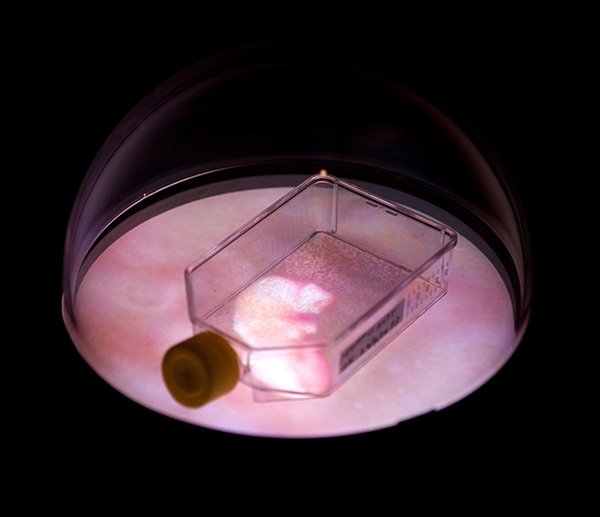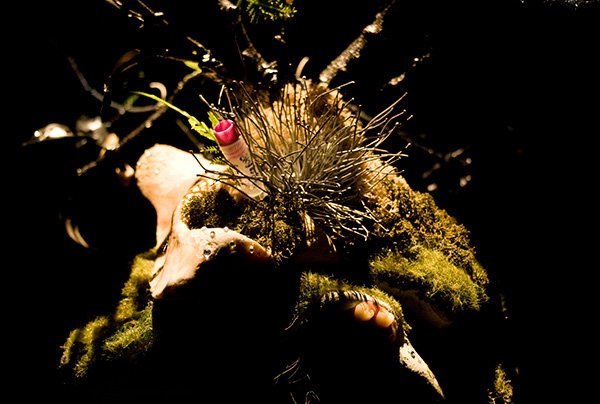HEK 293T: The Transformation of Johni or Oliver
The artwork HEK 293T: The Transformation of Johni or Oliver explores the complex and often unsettling nature of bio-engineered organisms. Created during a 2010 residency at the SymbioticA art-science lab at the University of Western Australia, this project involved genetically modifying HEK 293T cells—an immortalised human cell line derived from embryonic kidney cells—to express red and green fluorescent proteins introduced from marine invertebrates. These modifications caused the cells to glow red or green under specific lighting, illustrating the potential of biotechnologies to blur species boundaries.
The installation combines mixed media elements, including tissue culture flasks containing the modified cells, taxidermy butterflies, and sculptural components. By merging organic and synthetic materials, the work reflects on the ethical and ontological implications of creating hybrid organisms that incorporate genetic material across species. It challenges conventional classifications of life, raising questions about identity, interspecies connection, and the expanding scope of biotechnological intervention. Through this project, Kratz invites viewers to confront the uncanny presence of bio-engineered life forms and to consider the profound impact—and ethical responsibilities—of genetic science.
The work was exhibited as part of Broadcast at Level ARI in 2010, The Absence of Alice and the Bone Gardens at The Block in 2011 and in the group show Semi-Permeable + at the Powerhouse Museum, Sydney in 2013.
PROJECT DETAILS:
Svenja Kratz, HEK293T: The Transformation of Johni or Oliver, 2010 - 2013. Mixed Media: C;ay, Taxidermy, Moss, Bone, Steel Wire, Latex, Tanned Fetal Calf Hide, Wood, MDF, Perspex, Video, Fixed GM HEK 293T Cells, Plastic, Teeth, Human and Synthetic Hair.
HEK 293T was researched and developed during a residency at SymbioticA, centre of Excellence in the Biological Arts at UWA in Perth.Completion of this work would not be possible without the support from SymbioticA and UWA Staff. Special thanks to Oron Catts, Ionat Zurr, Jane Coakley and Jill Muhling. Thank you also to QUT Visual Arts and IHBI staff including Michael Riddle for assistance with artwork production and Dr Dan Mafe, Dr Courtney Pedersen and Prof. Zee Upton for project support.
Thank you.




